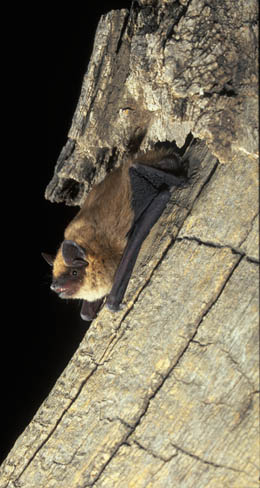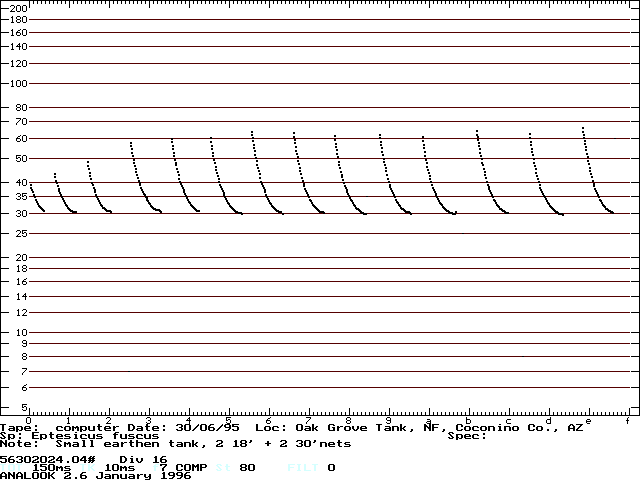
Description:
-
Weight: 1/2 - 5/8 oz. (13-18 g)
-
Body length: 4 - 5 1/8 in. (103-130 mm)
-
Wingspan: 13-16 in. (32-40 cm)
-
Forearm: 1 3/4 - 1 7/8 in. (45-48 mm)
The large size, uniform coloration, and large face with short/round ears makes the big brown bat easy to identify. While overall brown in appearance, the big brown bat’s belly tends to be lighter in color and its wings tend to be black in color. Big brown bats have been found to live up to 19 years in the wild.
Roosts:
-
Summer Roost: Big brown bats often roost in buildings, under bridges, in hollow trees, beneath loose bark, and behind shutters. They also will occasionally use
bat houses. If you suspect that you may have a bat roost at your house, please consider
reporting it. For exclusion information, please visit our page
here.
-
Winter Roost: In the winter, big brown bats roost in buildings, caves, and mines.
Diet:
Beetles, ants, flies, mosquitoes, mayflies, stoneflies, other insects.
Similar Species:
- Evening Bat much smaller.
- Myotines (genus Myotis) usually smaller, with 2 tiny premolars behind canine and longer, thinner tragus.
Conservation:
Big brown bats have dramatically declined in Maryland due to
white-nose syndrome. Currently, there is a slight population rebound occurring in Maryland hibernacula (winter roosts). Big brown bats are listed as
species of greatest conservation need in Maryland.
Sounds:
Big Brown Bat Call
Courtesy of Bat Call: Acoustic Call Library and Species Accounts
Big Brown Bat Spectrograph

Courtesy of Bat Call: Acoustic Call Library and Species Accounts
Photo by: Dr. J. Scott Altenbach
Return to Field Guide to Maryland Bats